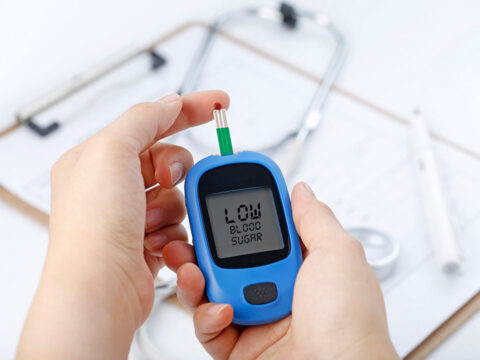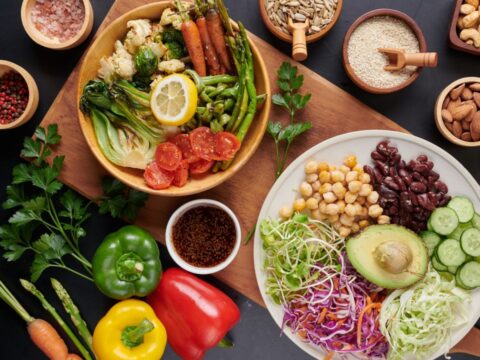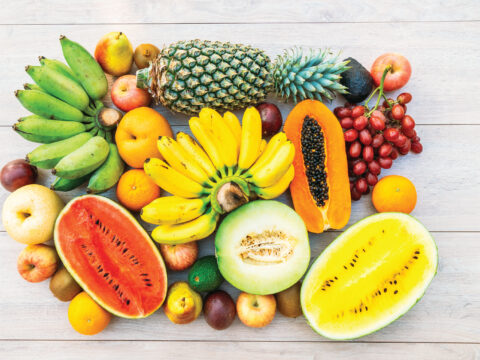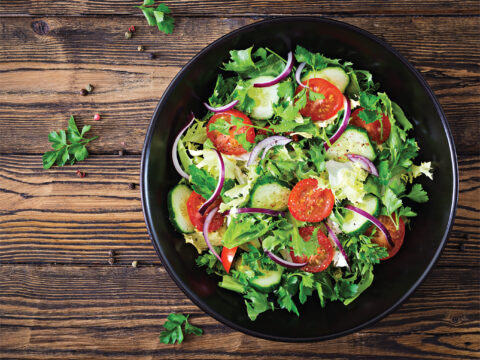November 23, 2022
- Filter by
- Categories
- Tags
- Authors
- Show all
- All
- #Diabetes #Cosmetics #Clothing #EDCs #EndocrineDisruptingChemicals #Phthalates #BisphenolA #BPA #Plastics #DiabetesRisk #Endocrine #Hormones #Pancreas
- #Diabetes #DiabetesTreatment #A1CLevel #A1CTest #BloodSugarLevels #Supplements #ChronicStress #IronDeficiencyAnaemia #Sleep #Medications #InsulinResistance #InsulinSensitivity
- #Diabetes #Flu #Influenza #MildFlu #Hypoglycaemia #Hyperglycaemia #BloodSugarLevels #BloodGlucoseLevels #Pneumonia #Ketones #DiabeticKetoacidosis #FluVaccine #NSAIDS #DiabeticComa
- #Diabetes #Oats #Fibre #GlycemicIndex #BloodSugar #OatGroats #InstantOats #DiabetesDiet #CardiovascularHealth #Gastroparesis #BloodGlucose #Cholesterol #Insulin
- #Diabetes #Type2DiabetesMellitus #T2DM #DietaryFibre #Fibre #Fruits #Veggies #Cereals #Pulses #WholeGrains #BloodSugarLevels #Obesity #HeartDisease #WeightLoss #WeightManagement
- #Glucotoxicity #HighBloodGlucose #BetaCells #Insulin #BloodSugar #Pancreas #HbA1C #A1C #Carbohydrates #Stress #OxidativeStress #Diet #FreeRadicals
- 2023
- A1C
- Abnormal Sweating
- Accurate Results
- Active Together
- Activity For Diabetes
- Adhesive Capsulitis
- Adolescents
- Adrenal Glands
- aerobic exercise
- aerobic exercise benefits
- Affects of Climate Change
- Age-Related Macular Degeneration
- Ageing
- Air pollution and diabetes
- air quality and diabetes
- Albuminuria
- Alcohol
- alcohols for diabetes
- Alopecia Areata
- Altitude
- altitude and diabetes
- Alzheimer's Diseases
- Alzheimer’s
- Amputation
- amputation levels
- amputation of leg
- amputation types
- Amputations
- amputations in diabetics
- anaerobic exercise
- Anger
- Anorexia
- Anorexia nervosa
- Antibodies
- Antioxidants
- anxiety
- Artificial Lightning
- Artificial Pancreas
- artificial sweetener
- Artificial Sweeteners
- Atherosclerosis
- Atrophic
- Auto-Immune Disorder
- Autoimmune Diseases
- Autoimmune Disorder
- Autoimmune disorders
- Autonomic Nerves
- Avoid
- Avoid Carbohydrates
- Bacterial Infection
- Bad Breath
- BadCholesterol
- Bariatric Surgery
- bariatric surgery benefits
- bariatric surgery candidate
- bariatric surgery for diabetes
- bariatric surgery risks
- Benefits
- benefits of meditation
- Benefits of Potato
- Benefits of Sugarcane Juice
- Beta Cells
- beverage
- Birth Control
- Birth Control Pills
- Birth Defects
- Black Tea
- Bladder Problems
- Blood
- Blood Circulation
- Blood Glucose
- Blood Glucose Control
- Blood Glucose Level
- Blood Glucose Levels
- blood glucose test
- Blood Pressure
- Blood Pressure Levels
- Blood Sugar
- Blood Sugar and Blood Pressure
- Blood Sugar Crash
- Blood Sugar Level
- Blood Sugar Levels
- blood sugar management
- blood sugar test
- blood sugar test at home
- blood sugar testing at home
- Blood Sugar Tests
- Blood Test For Diabetes
- Blood Test For Glucose
- BloodGlucose
- Blurry Vision
- books on diabetes
- Brain
- Breakfast
- Breast Lesions
- Brisk Walking
- bronze diabetes
- caffeine
- Calcium
- calcium for diabetes
- calcium importance
- calcium rich foods
- Calories
- Camping
- can a pancreas transplant cure diabetes
- can diabetes cause stroke
- can pancreas transplant cure diabetes
- can pancreas transplant cure type 1 diabetes
- can you cure diabetes with a pancreas transplant pancreas transplant for diabetes type 2
- Cancer
- Carbohydrates
- Carbs
- Carbs Concern
- Carcinogens
- Cardiovascular Disease
- CardiovascularDisease
- Caregiver
- Carpal Tunnel Syndrome
- Cat
- cataract
- cataract causes
- cataract in diabetes
- cataract symptoms
- Causes Of Diabetes
- causes of diabetic coma
- causes of diabetic ketoacidosis
- Celiac Disease
- Central Adiposity
- CGM
- CGMs
- charcot foot
- charcot foot diabetes
- Child
- Childhood Development
- Childhood Diabetes
- Children
- Children With Diabetes
- cholesterol
- Christmas
- Chronic Diseases
- Chronic Kidney Disease
- Chronic Stress
- ChronicKidneyDisease
- Cigarette
- Cigarette Smoking
- Cigarettes
- Circadian Rhythms
- CKD
- Climate Change
- Clothing
- Coconut Oil
- Coeliac Disease
- Coffee
- Cognitive Decline
- Cold
- cold and diabetes
- Colon
- Complications
- complications of diabetic foot
- Conquer Diabetes Phobias
- Constipation
- Continuous Glucose Monitoring
- Continuous Subcutaneous Insulin Infusion
- Contraception
- Contraceptive Methods
- control of diabetes
- ControlDiabetes
- Cookware
- CoronaryHeartDisease
- Coronavirus
- Cortisol
- Cosmetics
- CountingCarbs
- COVID 19
- COVID diabetes
- COVID in children
- COVID in diabetes patients
- COVID treatment with diabetes
- COVID-19 and diabetes
- COVID19
- CSII
- CTS
- cure diabetes
- cure for diabetes
- cure of diabetes
- cure to diabetes type
- cure type 2 diabetes
- CVD
- cystic fibrosis
- cystic fibrosis diabetes
- cystic fibrosis diabetes diagnosis
- cystic fibrosis diabetes symptoms
- DAN
- DASH diet
- DASH diet for diabetes
- Dawn Phenomenon
- Day
- Deafness
- Dehydration
- delay diabetic neuropathy
- Dementia
- Dendritic Cells
- dental disease with diabetes
- depression
- depression in teens with diabetes
- Desk
- Dessert Alternatives
- Desserts
- Detox Diet
- Detoxification
- DHA
- Diabetes
- diabetes activity
- diabetes advances
- diabetes albuminuria
- diabetes and alcohol
- diabetes and Alzheimer’s
- Diabetes and Anorexia
- Diabetes And Bad Breath
- diabetes and beer
- Diabetes and Blood Pressure
- Diabetes and cholesterol
- Diabetes and Climate
- diabetes and COVID-19 vaccination
- diabetes and COVID-19 vaccine safety
- diabetes and dementia
- diabetes and dental disease
- diabetes and depression
- diabetes and depression link
- Diabetes And Erectile Dysfunction
- diabetes and exercise
- diabetes and fast food
- Diabetes and feet
- diabetes and fitness
- diabetes and fruits
- diabetes and gluten
- Diabetes And Hearing Loss
- diabetes and heart disease
- Diabetes and Hypertension
- diabetes and keto diet
- diabetes and kidney stones
- diabetes and kidney stones diet
- diabetes and kidney stones symptoms
- diabetes and meditation
- diabetes and nausea
- diabetes and oral disease
- diabetes and oral health
- diabetes and pregnancy
- Diabetes and sexual dysfunction
- Diabetes and Skin Health
- Diabetes and Sleep Schedule
- diabetes and sports
- Diabetes and Stroke
- Diabetes and swelling
- diabetes and thyroid
- diabetes and vaccine
- diabetes and vaccines
- diabetes and wine
- Diabetes And Women’s Health
- diabetes and wound healing
- diabetes athletics
- diabetes back pain
- diabetes before pregnancy
- diabetes beverages
- diabetes blindness
- diabetes books
- Diabetes Burnout
- diabetes camping
- Diabetes Care
- diabetes caregiver
- Diabetes Causes
- diabetes causes back pain
- Diabetes Checklist
- diabetes complications
- Diabetes Complications in Elders
- diabetes complications in teens
- Diabetes Control
- diabetes control tips
- diabetes COVID
- Diabetes cure
- diabetes cures
- diabetes dental care
- diabetes dental health complications
- Diabetes Dental Hygiene Routine
- diabetes depression
- Diabetes Detox Diet
- diabetes diagnosis
- Diabetes diet
- diabetes diet plan
- diabetes diet tips
- diabetes diets
- Diabetes Distress
- diabetes drug side effects
- Diabetes Drugs
- diabetes eating
- Diabetes Ethnicity
- diabetes exercise
- diabetes eye condition
- Diabetes Facts
- Diabetes Fatigue
- Diabetes Food
- diabetes foot complications
- Diabetes goals
- Diabetes Guide
- Diabetes Health
- diabetes healthy diet
- diabetes healthy eating
- diabetes healthy food
- diabetes heart disease management
- diabetes heart disease risk
- Diabetes Help
- diabetes hiking
- diabetes home test
- Diabetes In Children
- Diabetes In India
- Diabetes In Indians
- diabetes in teenagers
- diabetes in teens
- Diabetes In Women
- Diabetes Influencers
- Diabetes Insipidus
- diabetes inspiration
- diabetes keto diet
- diabetes kidney damage
- Diabetes Kit
- Diabetes Management
- Diabetes Management In Monsoon
- diabetes meal plan
- diabetes meal prep
- diabetes medication side effects
- Diabetes Medications
- Diabetes Mellitus
- diabetes mental health
- Diabetes Mistakes
- diabetes mood swings
- diabetes motivation
- Diabetes Myths
- diabetes nausea
- Diabetes Numbers
- diabetes nutrition
- Diabetes Online Communities
- diabetes oral care
- diabetes outdoors
- diabetes pancreas transplant
- Diabetes Patient
- Diabetes Patients
- diabetes pregnancy risks
- diabetes prevention
- diabetes proteinuria
- Diabetes Race
- Diabetes resolutions
- diabetes reversal
- diabetes risk
- Diabetes Screening
- Diabetes Signs
- diabetes skin condition
- Diabetes Smoothies
- Diabetes Snacks
- diabetes stories
- diabetes stroke treatment
- Diabetes supplements
- Diabetes Symptoms
- diabetes symptoms in women
- Diabetes Symptoms Women
- diabetes tea
- diabetes technology
- Diabetes Tests
- diabetes tips
- Diabetes Treatment
- Diabetes Type 1
- Diabetes Type 2
- Diabetes Types
- diabetes vision loss
- diabetes weather
- diabetes with exercise
- Diabetes Wolfram Syndrome
- DiabetesAwareness
- DiabetesCare
- DiabetesGroupIndia
- DiabetesHelp
- DiabetesManagement
- DiabetesPrevention
- DiabetesSupport
- Diabetic
- Diabetic Autonomic Neuropathy
- Diabetic Boils
- diabetic children
- diabetic coma
- diabetic coma causes
- diabetic coma prevention
- Diabetic Complications
- diabetic dermopathy
- diabetic exercise
- diabetic eye disease
- Diabetic Eye Exam
- Diabetic Foot
- Diabetic Ketoacidosis
- diabetic ketoacidosis symptoms
- Diabetic Kidney Disease
- diabetic liver disease
- diabetic macular edema
- Diabetic Mastopathy
- Diabetic Nephropathy
- diabetic nerve damage
- Diabetic Nerve Pain
- Diabetic Neuropathy
- Diabetic Neuropathy #MedianNerve
- Diabetic Pregnancy
- Diabetic Retinopathy
- diabetic skin
- diabetic skin complications
- diabetic skin disorders
- diabetic skin lesions
- Diabetic Travel Kit
- Diabetic Woman
- DiabeticKetoacidosis
- DiabeticMacularOedema
- DiabeticRetinopathy
- diabetics
- Diaebetic Ketoacidosis
- diagnosis of diabetes
- Diagnosis Tests
- Diagnosis Type 1
- Diastolic
- DIDMOAD
- Diet
- dietary supplements for diabetes
- Digestion
- digital sclerosis
- Dinner
- Disabiltiy
- Disturbed Sleep
- DKA
- DME
- DOCs
- does altitude affect diabetes
- does weather affect diabetes
- Dog
- drinking with diabetes
- Dry Mouth
- Dry Skin
- Early Warning Signs
- Eating and Diabetes
- Eating Disorders
- Eating Habits
- ED
- Effects of Diabetes
- Electrolytes
- Electronic Skin Patches
- Emotional Health
- Emotional Problems
- Emotional Well-Being
- Encourage
- Endocrinologist
- Endocrinology
- Endothelial Dysfunction
- Enteric Nervous System
- EPA
- Epinephrine
- Erectile Dysfunction
- Estrogen
- Evening Meal
- Evening Snacks
- Excessive Hunger
- Excessive Sweating
- Excessive Urination
- Exercise
- Exercise For Diabetes
- exercise in diabetes
- Exercises
- Exercising
- Eye Damage
- Eye Diseases
- Eyes
- Eyesight
- Facts
- family lifestyle
- family support for diabetes
- Fast
- fast food diabetes risk
- Fasting
- Fasting Blood Sugar
- Fat
- Fatigue
- Fats
- Fatty Fish
- fatty liver disease
- Fear
- Feet
- Females
- femoral dysfunction
- femoral nerve damage
- femoral nerve injury
- femoral nerve pain
- femoral neuropathy
- Fertility
- Fibre
- First Aid Kit
- Fish
- Fitness Influencer
- Flash Glucose Monitoring
- Fluids
- Food
- Food Choices
- food environment diabetes
- Food For Diabetes
- Food Lover
- Foodie
- Foods
- Foot
- Foot Care
- Foot Complications
- Foot Infections
- Foot Problems
- foot problems from diabetes
- foot problems with diabetes
- Foot Ulcers
- Frequent Urination
- Fresh Food
- Frozen Shoulder
- Fruits
- fruits and diabetes
- fruits for diabetes
- Fungal Infection
- Gadgets
- Garlic
- Garlic Supplements
- GastroIntestinal
- Gastroparesis
- Genetics And Diabetes
- Gestational Diabetes
- Gestational Diabetes Mellitus
- GI
- GI Value
- Globetrotter
- Glucagon
- glucometer
- Glucose Strips
- Glucose Tablets
- Glucose Test After Meal
- GlucoseLoweringTreatment
- GlucoseParadox
- Gluten
- gluten free diet for diabetes
- Gluten Intolerance
- Gluten-Free
- Glycaemic Index
- glycaemic load
- glycaemic score
- glycaemic value
- GlycaemicIndex
- Glycemic Control
- Glycemic Index
- Glycosylated Haemoglobin
- Goal
- Gum Disease
- Gut Bacteria
- Habits
- Haemochromatosis
- Haemochromatosis And Diabetes
- Haemorrhoids
- Hair Loss
- HbA1C
- Healing
- Health
- health benefits of meditation
- health benefits of tea
- Health Care Provider
- Healthy
- Healthy Beverages
- Healthy Diabetes Diet
- healthy diet for diabetics
- healthy diet in diabetes
- Healthy Fats
- Healthy Food Habits
- Healthy Numbers
- Hearing Loss
- heart
- Heart Attack
- Heart Attacks
- Heart Complications
- Heart Disease
- Heart Diseases
- heat and diabetes
- Heat Exhaustion
- Heat Stroke
- Hectic Lifestyle
- Heel Pain
- Help
- hemochromatosis
- herbal supplements for diabetes
- HeterocyclicAmines
- HHS
- high altitude
- high altitude and diabetes
- high altitude and diabetes risk
- high altitudes
- High Blood Glucose
- High Blood Glucose Levels
- High Blood Pressure
- High Blood Pressure Levels
- High Blood Sugar
- High Blood Sugar Levels
- High-Intensity Interval Training
- HIIT
- Hiking
- Hiking and Camping With Diabetes
- Hippocampus
- home testing for diabetes
- Honey
- honey for diabetes
- Hormonal Contraceptive Methods
- Hormones
- how to quit smoking
- Humidity
- Hunger
- Hungry
- Hydration
- Hyperglycaemia
- Hyperglycaemia Hypoglycaemia
- Hyperglycemia
- Hyperinsulinemia
- hyperosmolar hyperglycaemic state
- hyperosmolar hyperglycemic state diagnosis
- hyperosmolar hyperglycemic state symptoms
- hyperosmolar hyperglycemic state treatment
- Hyperphagia
- Hypertension
- Hypertriglyceridaemia
- Hypo Box
- Hypoglycaemia
- Hypoglycemia
- Ice Cream
- Ice Cream Alternatives
- Idiopathic Postprandial Syndrome
- Immune Cells
- Immune System
- immunosuppressants
- Inactivity
- India
- Infection
- Infertility
- Influencers
- injecting insulin
- Insulin
- Insulin Injection
- Insulin Innovations
- Insulin Levels
- Insulin Needle Size
- insulin needles
- Insulin Overdose
- Insulin Pump Glucose Variability
- Insulin Pumps
- Insulin Resistance
- Insulin Resistance Causes
- Insulin Resistance Symptoms
- Insulin Resistant
- Insulin Secretion
- Insulin Sensitivity
- insulin syringes
- Insulin-Producing Beta Cells
- InsulinResistance
- Intermittent Fasting
- International Day of Action for Women’s Health
- Interstitial Cells of Cajal
- Inverse Vaccine
- IPS
- iron overload diabetes
- is keto diet good for diabetes
- is oatmeal healthy for diabetics
- Ischemic Stroke
- jagger for diabetes
- Juvenile Diabetes
- Keto
- keto diet
- keto diet and diabetes
- keto diet benefits
- keto diet diabetes
- keto diet for diabetes
- keto diet not for everyone
- keto diet risks
- Ketoacidosis
- Ketogenic Diet
- Ketones
- Ketosis
- Kidney
- Kidney Damage
- Kidney Diseases
- kidney stones
- Kidneys
- Kids
- LADA
- Late Night Eating Side Effects
- late-Night Eating
- latent autoimmune diabetes
- latent autoimmune diabetes adults
- latent autoimmune diabetes diagnosis
- latent autoimmune diabetes diet
- Lean Meat
- Leaner Cuts
- Libido
- Lifestyle
- LipoProteinInsulinResistance
- Liver
- Liver Cirrhosis
- Liver Diseases
- Living with diabetes
- Losing Weight
- Loved Ones
- Low Blood Glucose
- Low Blood Sugar Levels
- Low Glycemic Index
- Low Insulin Sensitivity
- Low-Carb Diet
- LowDensityLipoprotein
- Lowering Blood Sugar Levels
- Lunch
- magnet therapy
- Major Depressive Disorder
- management diabetes mellitus
- management of hyperosmolar hyperglycaemic state
- managing teenage diabetes
- Mastopathy
- Meal Plan
- Meal Prepping
- Meal Prepping Tips
- Meal Timings
- Meals
- MeasuringByHand
- Meat
- Meats
- Medication
- Medications
- Medicines
- meditation for diabetes
- Men Sexual Dysfunction
- Men Sexual Health
- Menopausal Symptoms
- Menopause
- Menstrual Cycle
- Mental Health
- Mental Health Conditions
- mental health in teens
- mental health issues diabetes
- Metabolic Disease
- MetabolicSyndrome
- Metabolism
- Metformin
- metformin risks
- metformin side effects
- Milk Tea
- Minerals
- Miscarriage
- Miscoding
- Misconception
- Monitor
- Monogenic Diabetes
- Monsoon
- Monsoon Snacks
- Monsoons
- mood swings
- mood swings from diabetes
- mood swings in diabetes
- Motivation
- Myths
- Myths VS Facts
- NAFLD
- natural sweeteners
- nature and diabetes
- nausea
- NDMA
- NeonatalDiabetes
- Nerve damage
- nerve damage prevention
- nerves
- Neural Tube
- Neurological Complications
- Neurological Disorder
- Neurological Disorders
- Neuropathy
- Nicotine
- Non-Alcoholic Fatty Liver Disease
- non-nutritive sweeteners
- normal blood glucose levels
- Nutrition Influencer
- Nutritional Value
- Nutritionists
- Nutritious
- oatmeal
- oatmeal and diabetes
- oatmeal breakfast
- oatmeal in diabetes
- Obese
- Obesity
- Omega 3
- Optic Atrophy
- Oral Health
- Oral Hygiene
- Oral Insulin
- oral thrush
- oral thrush symptoms
- oral thrush treatment
- Orgasms
- Overcome Fear
- Oxidative Stress
- Packaged and Processed foods
- Packing
- pancreas
- pancreas transplant
- pancreas transplant for diabetes type 1
- pancreas transplantation
- Pandemic
- parenting a teen with diabetes
- Parkinson’s Disease
- Patient
- PCOS
- PCOS and Diabetes
- Pediatric Diabetes
- People With Diabetes
- Perfluorinated Compounds
- Perfluorooctanoic Acid
- Periodontal Disease
- Periodontitis
- Personal Hygiene
- Pets
- Phobias
- Phthalates
- Physical Activity
- physical activity for children with diabetes
- Physical Exercise
- Piercings
- Piles
- Piles and Diabetes
- Piles Treatment
- Plant-Based Foods
- Plantar Fascia Ligament
- Plantar Fasciitis
- Plate Method
- PlateMethod
- pollution
- Polycyclic Aromatic Hydrocarbons
- Polycystic Ovarian Syndrome
- Polycystic Ovarian Syndrome (PCOS) and Diabetes
- Polydipsia
- Polyphagia
- Polyuria
- Portion
- Portion Control
- Portion Sizes
- PortionControl
- Portions
- Postprandial
- Postprandial Blood Glucose
- Postprandial Blood Glucose Levels
- Postprandial Blood Pressure
- Postprandial Blood Sugar
- Postprandial Blood Sugar Levels
- Postprandial Dysmetabolism
- Postprandial Hyperglycaemia
- Postprandial Sugar
- PostPrandialBloodSugar
- Potato
- PPS
- pre-existing diabetes during pregnancy
- Prediabetes
- Prediabetes Numbers
- prediabetes treatment
- Preeclampsia
- Pregnancy
- Pregnancy Complications
- pregnancy with diabetes
- pregnant with diabetes
- Premature Ageing
- Preparation
- Prepare Your Meals
- prevent back pain
- Prevent Sarcopenia
- prevention of diabetic neuropathy
- Processed Meat
- Progress in diabetes
- Psychological Disorders
- Quit Smoking
- quit smoking benefits
- quit smoking tips
- Quitting Smoking
- Rage
- Recipes
- Red Blood Cells
- Red Meat
- Resistance Training
- reverse diabetes
- reverse prediabetes
- reversing diabetes
- Reversing Diabetic Neuropathy
- Risk Factors
- risk factors for metformin side effects
- risk of diabetic ketoacidosis
- Risks
- Routine Health Checks
- Safe Christmas
- Sarcopenia
- Saturated Fat
- Sausages
- Sedentary Lifestyle
- Self-Care Practices
- Self-Monitor Blood Pressure
- Self-Monitoring Blood Pressure
- Serving Size
- Severe Insulin Resistance
- Severe Symptoms
- sex disorders diabetes
- Sexual and Reproductive Health and Rights
- Sexual Arousal
- Sexual Health
- signs of diabetes in children
- Silent Heart Attacks
- Sitting
- Skin
- skin allergy
- Skin Boils
- Skin Care
- skin condition
- Skin Conditions
- skin diseases
- skin diseases in diabetes
- Skin Disorders
- Skin Health
- skin infections
- Skin Problems
- skin problems in diabetes
- skin rashes
- Skin Tags
- Sleep
- Sleep Deprivation
- Sleep Disorders
- Sleep Schedule
- Slow Progression of CKD
- Smart Insulin
- smoke and diabetes
- Smoking
- smoking and diabetes
- smoking diabetes complications
- smoking with diabetes
- Snacking
- social support for diabetes
- Sodium
- Sores
- Sports Drinks
- sports for children with diabetes
- strategies to quit smoking
- Strawberries
- Stress
- Stress by Diabetes
- Stress Management
- Strips
- Stroke
- stroke in diabetes
- stroke with diabetes
- sugar
- sugar alternatives
- Sugar Crash
- sugar substitutes
- Sugarcane Juice
- Sugarcane Juice in Diabetes
- Summer
- sunlight
- Superfoods
- Support
- Support Children With Diabetes
- Support Diabetics
- SupportGroups
- Swelling
- swollen feet and ankle
- Symptoms
- symptoms of diabetes stroke
- symptoms of latent autoimmune diabetes
- Systolic
- Tasty Foods
- Tattoos
- Tea
- tea for diabetes
- Technology
- Teenagers
- teenagers with diabetes
- teens with diabetes
- Television
- Temperature
- Testing Site
- Tests
- Therapy
- Thirst
- thyroid disease
- thyroid disorders
- Tips
- tips for depression
- tips for diabetes control
- tips to manage diabetes
- tips to stay motivated
- tips to stay positive
- transplantation of pancreas
- Travel
- Travel Kit Essentials
- Travelling
- Treat Infertility
- treatment for diabetic dermopathy
- Triglycerides
- TRL
- Type 1
- Type 1 Diabetes
- type 1 diabetes and mental health
- type 1 diabetes in children
- Type 2 Diabetes
- type 2 diabetes and mental health
- type 2 diabetes curable
- type 2 diabetes in children
- type 2 diabetes reversible
- Type1.5 Diabetes
- Type1Diabetes
- Type2
- type2 diabetes
- Type2Diabetes
- types of diabetic coma
- Unconditional Love
- undiagnosed diabetes
- untreated diabetes
- Urinary tract infections
- Urination
- UTI In Women
- vaccine
- vaccine side effects
- vaccines
- Vaginal Dryness
- Vaginal Infection
- Vaginal Infections
- Vagus Nerve
- Vascular Diseases
- Very Lean Meat
- Vision
- Vision Loss
- Vitamin and Mineral Supplements
- Vitamin D
- vitamin supplements diabetes
- vitaminD
- vitaminD level
- Vitamins
- Walk
- Walking
- WalkingForDiabetes
- Warning Signs
- Warning Signs Of Diabetes
- ways to quit smoking
- Wearable Gadgets
- Weekly Insulin
- Weight
- Weight Gain
- Weight Lifting
- Weight Loss
- Weight Loss in Diabetes
- Weight Loss Surgeries
- Weight Management
- Weight Reduction
- Weight Training
- Wellbeing
- what foods to avoid with diabetes
- what is hyperosmolar hyperglycemic state
- Winter
- Women
- women and diabetes
- Women’s Health
- women’s health diabetes
- Work Station
- Workout
- World No Tobacco Day
- wound
- wound healing
- wound healing process
- Wounds
- Yellow Nails
- yoga benefits for diabetes
- yoga for diabetes
October 15, 2022
April 7, 2022
February 7, 2022
[…]




